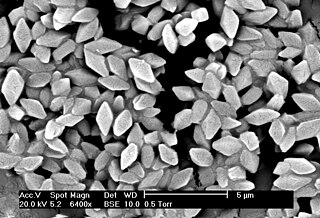
Bacillus thuringiensis is a Gram-positive, soil-dwelling bacterium, the most commonly used biological pesticide worldwide. B. thuringiensis also occurs naturally in the gut of caterpillars of various types of moths and butterflies, as well on leaf surfaces, aquatic environments, animal feces, insect-rich environments, and flour mills and grain-storage facilities. It has also been observed to parasitize other moths such as Cadra calidella—in laboratory experiments working with C. calidella, many of the moths were diseased due to this parasite.

Insecticides are substances used to kill insects. They include ovicides and larvicides used against insect eggs and larvae, respectively. Insecticides are used in agriculture, medicine, industry and by consumers. Insecticides are claimed to be a major factor behind the increase in the 20th-century's agricultural productivity. Nearly all insecticides have the potential to significantly alter ecosystems; many are toxic to humans and/or animals; some become concentrated as they spread along the food chain.

Biological control or biocontrol is a method of controlling pests such as insects, mites, weeds and plant diseases using other organisms. It relies on predation, parasitism, herbivory, or other natural mechanisms, but typically also involves an active human management role. It can be an important component of integrated pest management (IPM) programs.
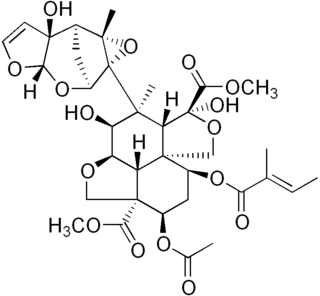
Azadirachtin, a chemical compound belonging to the limonoid group, is a secondary metabolite present in neem seeds. It is a highly oxidized tetranortriterpenoid which boasts a plethora of oxygen-bearing functional groups, including an enol ether, acetal, hemiacetal, tetra-substituted epoxide and a variety of carboxylic esters.

Bacillus thuringiensis serotype israelensis (Bti) is a group of bacteria used as biological control agents for larvae stages of certain dipterans. Bti produces toxins which are effective in killing various species of mosquitoes, fungus gnats, and blackflies, while having almost no effect on other organisms. The major advantage of B. thuringiensis products is that they are thought to affect few non-target species. However, even though Bti may have minimal direct effects on non-target organisms, it may potentially be associated with knock-on effects on food webs and other ecosystem properties, including biodiversity and ecosystem functioning.

Vector control is any method to limit or eradicate the mammals, birds, insects or other arthropods which transmit disease pathogens. The most frequent type of vector control is mosquito control using a variety of strategies. Several of the "neglected tropical diseases" are spread by such vectors.
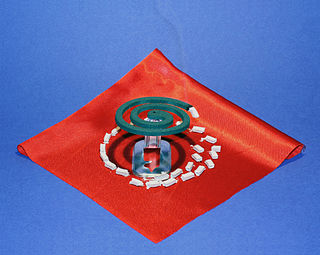
An insect repellent is a substance applied to skin, clothing, or other surfaces to discourage insects from landing or climbing on that surface. Insect repellents help prevent and control the outbreak of insect-borne diseases such as malaria, Lyme disease, dengue fever, bubonic plague, river blindness, and West Nile fever. Pest animals commonly serving as vectors for disease include insects such as flea, fly, and mosquito; and ticks (arachnids).

Temefos or temephos is an organophosphate larvicide used to treat water infested with disease-carrying insects including mosquitoes, midges, and black fly larvae.

Mosquito control manages the population of mosquitoes to reduce their damage to human health, economies, and enjoyment. Mosquito control is a vital public-health practice throughout the world and especially in the tropics because mosquitoes spread many diseases, such as malaria and the Zika virus.

Fungus gnats are small, dark, short-lived gnats, of the families Sciaridae, Diadocidiidae, Ditomyiidae, Keroplatidae, Bolitophilidae, and Mycetophilidae ; they comprise six of the seven families placed in the superfamily Sciaroidea.

Methoprene is a juvenile hormone (JH) analog which acts as a growth regulator when used as an insecticide. It is an amber-colored liquid with a faint fruity odor.

Pyriproxyfen is a pesticide which is found to be effective against a variety of insects. It was introduced to the US in 1996, to protect cotton crops against whitefly. It has also been found useful for protecting other crops. It is also used as a prevention for flea control on household pets, for killing indoor and outdoor ants and roaches. Methods of application include aerosols, bait, carpet powders, foggers, shampoos and pet collars.

Pore-forming proteins are usually produced by bacteria, and include a number of protein exotoxins but may also be produced by other organisms such as earthworms, who produce lysenin. They are frequently cytotoxic, as they create unregulated pores in the membrane of targeted cells.
Lysinibacillus sphaericus is a Gram-positive, mesophilic, rod-shaped bacterium commonly found on soil. It can form resistant endospores that are tolerant to high temperatures, chemicals and ultraviolet light and can remain viable for long periods of time. It is of particular interest to the World Health Organization due to the larvicide effect of some strains against two mosquito genera, more effective than Bacillus thuringiensis, frequently used as a biological pest control. L. sphaericus cells in a vegetative state are also effective against Aedes aegypti larvae, an important vector of yellow fever and dengue viruses.
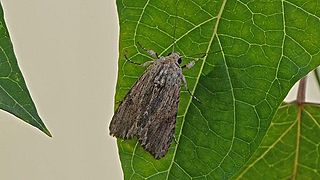
Spodoptera eridania is a moth that is known to be a pest. They are one of the most important defoliators in the tropical and subtropical regions of the western hemisphere that feed heavily on plants while they are young, often resulting in skeleton leaves on their food plants. They are also heavy feeders on tomato in Florida. There is a lot of development in producing pesticides against the S. eridania, specifically a neem-based pesticide that can result in smaller and prolonged development. The wingspan is 33–38 mm. Adults are on wing year-round. The larvae feed on various weeds but prefer Amaranthus species and Phytolacca americana.

Naled (Dibrom) is an organophosphate insecticide. Its chemical name is dimethyl 1,2-dibromo-2,2-dichloroethylphosphate.
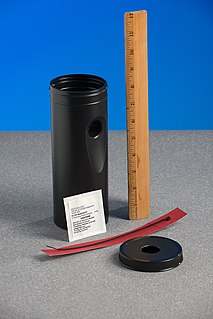
A lethal ovitrap is a device which attracts gravid female container-breeding mosquitoes and kills them. The traps halt the insect's life cycle by killing adult insects and stopping reproduction. The original use of ovitraps was to monitor the spread and density of Aedes and other container-breeding mosquito populations by collecting eggs which could be counted, or hatched to identify the types of insects. Since its conception, researchers found that adding lethal substances to the ovitraps could control the populations of these targeted species. These traps are called lethal ovitraps. They primarily target Aedes aegypti and Aedes albopictus mosquitoes, which are the main vectors of dengue fever, Zika virus, west Nile virus, yellow fever, and chikungunya.
The German Mosquito Control Association (GMCA) conducts insecticide operations in the mosquito-infested floodplains of the Upper Rhine between Bingen and Offenburg. The work is carried out by helicopter and by backpack-sprayers.
Mesocyclops aspericornis is a freshwater copepod species in the genus Mesocyclops found in the tropics. It was collected from Sumatra, Singapore and Hawaii.
Sammy Boussiba is a professor emeritus at the French Associates Institute for Agriculture and Biotechnology of Drylands at the Jacob Blaustein Institutes for Desert Research at Ben-Gurion University of the Negev, Israel.

















